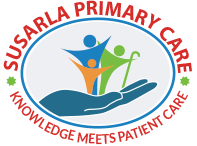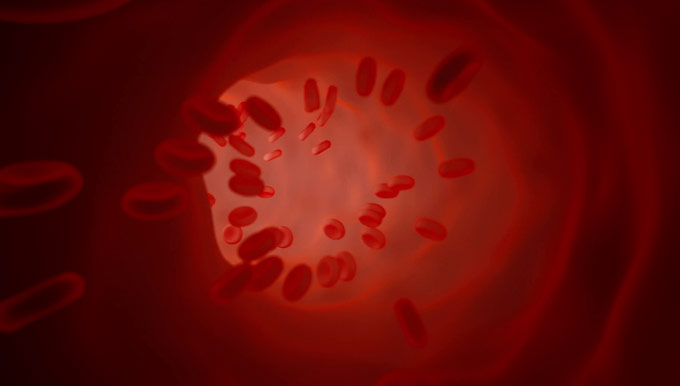Coronary artery disease also is called CAD or coronary heart disease. It occurs when the blood vessels (coronary arteries) that carry blood to your heart harden. The thickening looks like a fatty substance. It is called plaque. As it builds up inside the walls of the arteries, it blocks blood flow to your heart. That blockage could cause angina (squeezing pain or pressure in your chest), a heart attack, or death.
Symptoms of coronary artery disease
As your arteries become blocked over time, you may experience:
- angina
- shortness of breath
- heart attack
Coronary artery disease may take years to develop. You may not notice any symptoms until the disease has progressed significantly.
What causes coronary artery disease?
Coronary artery disease affects both men and women. Several factors can increase your risk of developing the disease, including:
- age
- family history
- high blood pressure
- high cholesterol
- smoking
- poor diet
- obesity or being significantly overweight
- inactivity (sedentary lifestyle)
- other health conditions (diabetes)
How is coronary artery disease diagnosed?
Your doctor will perform a physical exam (specifically listening to your heart). He or she also will discuss your symptoms, family history, diet, activity level, and any other medical conditions. There is no one test that can diagnose coronary artery disease. If you doctor suspects you have it, he or she may order one or more of the following tests.
- EKG (Electrocardiogram). This is a painless, simple test that monitors your heart’s beat and rhythm. Also, it tests the strength and timing of your heart’s electrical signals. It involves putting electrodes (tiny pads attached to wires) on your chest. The pads are held in place by a sticky substance.
- Stress test. During this test, you will be asked to exercise to give your heart a workout. You will be connected to a heart monitor. You strap the monitor around your chest. It can detect abnormal changes to your heart rate, rhythm, electrical activity, blood pressure, shortness of breath, or chest pain. If you are unable to exercise (for medical reasons), you doctor will prescribe medicine that raises your heart rate.
- Echocardiography. This test is painless. It relies on a test that uses sound waves to see a picture of your heart while it is beating. It will give doctors a look at the size and shape of your heart. Also, it shows your heart chambers and valves.
- Chest X-ray. This is an X-ray focused in the area of your heart. The X-ray can detect signs of heart failure.
- Blood tests. Your doctor will take a sample of your blood to send to the lab. The lab can test for certain conditions that raise your risk of coronary artery disease. These include testing certain fats, cholesterol, sugar, and proteins.
Coronary angiography and cardiac catherization. This is a procedure that is normally done if other tests show you have coronary artery disease. The procedure is performed in a hospital. It involves injecting dye into your coronary arteries with a thin, flexible tube. The tube is inserted into a blood vessel in your arm, groin (upper thigh), or neck. An X-ray is used to monitor the dye as it travels through your coronary arteries. It helps doctors monitor your blood flow through your heart and blood vessels. This test is generally painless, and you remain awake throughout the procedure.
Can coronary artery disease be prevented or avoided?
- Coronary artery disease cannot be completely prevented or avoided. However, you can reduce your risks for getting the disease by:
Don’t smoke! Nicotine raises your blood pressure, which contributes to heart disease. - Check your blood pressure. If your blood pressure is above 130/80, you should see your doctor right away.
- Eat healthy. Choose fruits, vegetables, meats, fish, and whole grains. Try to avoid processed foods, white flour, sugars, and high fructose corn syrup. The Mediterranean Diet is also very good for heart health. If you have questions, talk to your doctor about how to make heart-healthy changes to your diet.
- Exercise/ strength training. Regular exercise can make your heart stronger and reduce your risk of heart disease.
- Aspirin. Talk to your doctor about the pros and cons of daily low dose aspirin. It helps reduce heart disease. However, it does have some health side effects.
- Screen for diabetes. It is very important you have a fasting glucose and HbA1c checked about once a year. If your blood tests are abnormal, you should contact your doctor right away to begin a treatment plan. High blood sugars in diabetics can damage important nerves and blood vessels in your heart.
- Stress less. Stress increases cortisol, which leads to weight gain, a key risk factor for heart disease. In addition, stress can lead to other unhealthy habits, making it harder to stick to a heart-healthy program. Stress can also decrease overall happiness and increase the risk for anxiety and depression. You should practice positive self-talk and incorporate mindfulness meditation breaks throughout the day.
- Sleep more. Sleeping restores the body, helps decrease stress and increases overall happiness. To reap the full benefits, clocking seven hours each night is key. A calming bedtime routine and going to bed and waking at the same time each day are all great ways to establish healthy sleep patterns. Getting ample sunshine and physical activity throughout the day also aid in improving sleep quality.
- Smile. A happy heart is a healthy heart. Making time for enjoyable activities and hobbies helps relieve stress and improves the overall mood, providing a great foundation for a heart-healthy lifestyle.
Diet and lifestyle changes will lower your risk of coronary artery disease. Your body will need time to respond to the changes you’ve made. Your doctor will watch your progress. For example, if your cholesterol level hasn’t improved after you’ve made changes for a few months, your doctor may prescribe medicine to lower your cholesterol. You will still need to keep up the healthy lifestyle changes you’ve started to help the medicine work.

